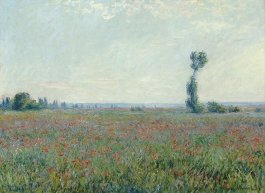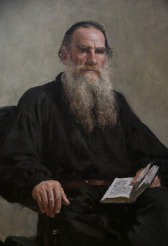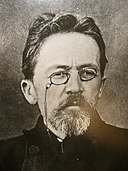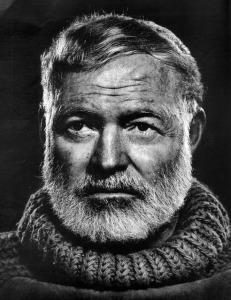Style is everywhere in art and everywhere in everyday life. There would be no art without style. Picasso’s Guernica has a style, and Pride and Prejudice does too, and the building you are in has a style. Whenever you speak or send a text or dress or brush your hair, you have a style. You’re reading a style right now. It is mine, and just as, whether you know it or not, you have spent probably  thousands of hours developing yours (so that I’d recognize anywhere that it is yours), I have consciously spent many hours developing mine.
thousands of hours developing yours (so that I’d recognize anywhere that it is yours), I have consciously spent many hours developing mine.
A core reason you are attracted to one painter over others or one writer over others, or why you like Sinatra, or Chopin or Debussy or The Simpsons is their style. Speaking of style, short story specialist Irishman Frank O’ Connor said, “One sees that the way a thing is made controls and is inseparable from the whole meaning of it.” In the same vein but more emphatically American Nobel Prize writer Toni Morrison said, “Getting a style is about all there is to writing.”
The total effect of what a writer says will depend to a considerable extent on how the writer says it. Style is the manner of saying what is said. Some styles are appealing, but many are unappealing. The writer should always want to write with an appealing style. It needn’t be beautiful, but it should be appealing.

Claude Monet
The writer’s style expresses his or her temperament and his or hers alone, and reveals verbal abilities, methods of writing, enthusiasms, and even self-doubts. By analyzing a writing style you can analyze the writer. Painters leave their print everywhere in their paintings. Style is the whole artist that is made recognizable in the work. You can see from a work that a Cezanne temperament is not a Monet temperament.
There are good styles and bad styles. . People do not generally like weird, eccentric styles. When artists discover the style that best expresses them (which may take years to happen) they experience a breakthrough and feel a new sense of power and confidence over their work.
A sign for writers that they are on the right track is the emergence in the work at hand of their characteristic style. When they see their style taking shape in the work, they feel secure. I’ve always felt that when I get the first paragraph under control (in my style), the piece is basically written.
Simplicity
Artists who are interested in styles today are almost automatically interested in SIMPLICITY, claiming that works of art should not be unnecessarily complicated. Speaking of simplicity, writer Willa Cather said that the higher processes of art are all processes of simplification.
Anton Chekhov is considered the master of the short story–the greatest, the best to learn from. He wrote to his brother, also a writer, “A strange thing has happened to me: I have developed a mania for brevity–everything strikes me as too long.” He practiced “maximal conciseness.” His phrases are simple, such as, “The sun set,” “It got dark,” and “It started to rain.” Novelist Somerset Maugham thought that writing simply was more difficult than it might seem. He said: To write simply is as difficult as to be good.”
Chekhov believed that not only should a short story’s style be simple, but the plot should be simple too. He said, “The more elaborate the plot of a given story is, the less effective it tends to be as a work of art.” In many of his stories precious little happens. He said, “You should take something ordinary, something from everyday life without a plot or ending.” He said a story should have a man and a woman, and a little action. Some of his most admired stories are mood-pieces in which plot is barely present.

Frank Lloyd Wright
Architect Frank Lloyd Wright, designer of New York’s Guggenheim Museum, was interested in simplicity not only in architecture, but in all arts. He believed that there could be but one best way for the artist to express anything, and that the way could include only what was absolutely necessary to express the essential meaning of the thing. That requires stringent simplification. By eliminating the inessentials, the artist arrives at the nature of the object—its pure form. But the artist must know when to stop simplifying. Wright said, “Less would ruin the work as surely as would ‘more.’” So, simplify but don’t go too far.
Accessibility and Artworks

Leo Tolstoy
Artists who are interested in style and interested in simplicity are also interested in ACCESSIBILITY of their works. In any of the arts, the artist has to decide–as do you–if it is important to appeal to an audience, to be understood by an audience. Should the work be accessible? How accessible? Leo Tolstoy, whose novels are sometime considered the greatest ever written, said, “Great works of art are only great because they are accessible and comprehensible to everyone.” Sculptor Jacques Lipchitz thought what many people think: that so-called great works are too pompous, too stiff, and are not accessible. Ford Maddox Ford was all for accessibility and said, “You must have your eyes forever on your Reader. That alone constitutes Technique”
William Faulkner felt differently. He said, “I don’t care about John Doe’s opinion on mine or anyone else’s work. Mine is the standard which has to be met.” (And he won a Nobel Prize.) But his work is accessible only with difficulty–long, convoluted sentences and rhetorical style. But Francois Mauriac disagreed with Faulkner and said, “An author who assures you that he writes for himself alone and that he does not care whether he is heard or not is a boaster and is deceiving himself or you.” (And he won a Nobel Prize too.) Delacroix wanted accessibility. He said. “A picture is but the bridge between the soul of the artist and that of the spectator.” How accessible will your work be?
The Author’s Intensity and the Production of Literature
The artist’s INTENSITY is reflected in style. Some artists’ style is laid back, but others’ style is red hot. Raymond Chandler turned hard-boiled detective writing into critically-accepted literature and had a lot to say about the writer’s craft. He wrote: “When a book, any sort of book, reaches a certain intensity of artistic performance it becomes literature. That intensity may be a matter of style, situation, character, emotional tone, or idea, or half a dozen other things. It may also be perfection over the movement of a story similar to the control a great pitcher has over a ball.” Painter George Innes said, “The greatness of art is not in the display of knowledge…but in the distinctness with which it conveys the impression of a personal vital force that acts spontaneously, without fear or hesitation.”
Advice Regarding Emotions, Plot, and Understatement

Van Gogh
A style conveys EMOTIONS. Chekhov wrote, “The more emotionally charged a situation, the more emotional restraint one must show in writing, and then the result will be emotionally powerful. There is no need to lay it on thick.” Other Chekhov quotes: “Avoid describing the mental state of your protagonist.” “Avoid describing emotional states…one should make these apparent from action.“ “To get strong emotions from the reader, try to be somewhat colder.” Thinking the same thing as Russian Chekhov, Frenchman Gustave Flaubert said, “The less one (the writer) feels a thing, the more likely one is to express it as it really is.”
The two other greatest writers of short stories–Guy de Maupassant and Ernest Hemingway–also advocated emotional understatement. Hemingway wrote “Dispassionate prose,” prose always less emotional than the events seem to demand. Understatement elicits strong emotional responses from the reader.
Emotional states in writing are amplified by brevity. American writer Flannery O’ Connor said that the fiction writer has to realize that compassion or emotions cannot be created with emotion. The style itself must be emotion-free.
Artists Can’t Help It: They Repeat Themselves
F. Scott Fitzgerald was a highly successful writer by the age of twenty-four. He said, “Mostly, we authors repeat ourselves—that’s the truth. We have two or three great moving experiences in our lives—experiences so great and moving that it doesn’t seem at the time that anyone else has been caught up and pounded and dazzled and astonished and beaten and broken and rescued and illuminated and rewarded and humbled in just that way ever before”
Claude Monet painted the same subject over and over. As an Impressionist he was interested in conveying the effect of light on objects, and would often set his clock to be at the place where the subject was at intervals so he could catch the light at noon, say, and ten minutes later and ten minutes after that. He might paint seven or ten paintings of the very same thing in different light.
All Artists Need Taste

Picasso
Obvious in a work of art is the artist’s aesthetic judgment, which he/she develops over time and experience. “At the higher levels of creativity it is probable that few besides the creators themselves are able to assess a new creation, and it is necessary that they should learn to adopt an objective critical attitude toward their own work…(the creators’ self-criticism) must be based on sound insight and aesthetic appreciation–what one would call ‘taste” (R. Ochse).
Some Writers Are in the Wrong Art
“Often while reading a book one feels that the author would have preferred to paint rather than write; one can sense the pleasure he derives from describing a landscape or person, as if he were painting what he is saying because deep in his heart he would have preferred to use brushes and colors” (Pablo Picasso). A good example is Joseph Conrad in his masterpiece Heart of Darkness.
Miscellaneous Insights About Writing
“Good writing is the hardest form of thinking. It involves the agony of turning profoundly difficult thoughts into lucid form, then forcing them into the tight-fitting uniform of language, making them visible and clear. If the writing is good, then the result seems effortless and inevitable. But when you want to say something life- changing or ineffable in a single sentence, you face both the limitations of the sentence itself and the extent of your own talent” (Pat Conroy).
changing or ineffable in a single sentence, you face both the limitations of the sentence itself and the extent of your own talent” (Pat Conroy).
Flannery O’Connor said, “A good short story should not have less meaning than a novel, nor should the action be less complete. Nothing essential to the main experience can be left out of a short story.”
“Since Stephen Crane’s time [late nineteenth century] all serious writers have concentrated on the effort of rendering individual scenes more vividly” (Caroline Gordon).
“A novelist’s characters must be with him as he lies down to sleep, and as he wakes from his dreams. He must learn to hate them and to love them” (Anthony Trollope.)
“It has been through Flaubert that the novel has at last caught up with poetry” (Allen Tate).
“Maybe every novelist wants to write poetry first” (William Faulkner).
“Only when the moral beliefs of the reader tally exactly with those on which a story is based will the reader have the whole of the emotion which it is potentially able to produce in him” (Montgomery Belgion).
A personal style that makes you comfortable and confident helps you accomplish whatever you wish to accomplish in your art. An artist’s style evolves over a lifetime of work. What it was when you were twenty-five is not the same as it is now when you are fifty. This post and the ideas and experiences here of many important artists may help you strengthen and perfect your own style.
© 2020 David J. Rogers
For my interview from the international teleconference with Ben Dean about Fighting to Win, click the following link:
Order Fighting to Win: Samurai Techniques for Your Work and Life eBook by David J. Rogers
or
Order Waging Business Warfare: Lessons From the Military Masters in Achieving Competitive Superiority
or



 Actor Lord Laurence Olivier aimed at perfect performances, as did Peter O’Toole, Olivier’s successor as the world’s greatest actor–the perfect performances in the perfect tragedies as the perfect characters–as Hamlet, King Lear, Othello, or Iago. One night Olivier felt that he had achieved perfection in a performance. Others in the cast also told him he had. He said, “What I’m thinking is I’ve done it, but will I be able to do it again?” Perfection is difficult and rare. It is hard to repeat. It is a concept that grows in importance to artists as their skills and accomplishments ascend to high levels.
Actor Lord Laurence Olivier aimed at perfect performances, as did Peter O’Toole, Olivier’s successor as the world’s greatest actor–the perfect performances in the perfect tragedies as the perfect characters–as Hamlet, King Lear, Othello, or Iago. One night Olivier felt that he had achieved perfection in a performance. Others in the cast also told him he had. He said, “What I’m thinking is I’ve done it, but will I be able to do it again?” Perfection is difficult and rare. It is hard to repeat. It is a concept that grows in importance to artists as their skills and accomplishments ascend to high levels. It is true that serious dancers currently and throughout history have aimed at perfection, but other artists–usually the best in the art, those that are aware that they have a significant talent–also aim for perfection in their work, I believe. Those who do aim for perfection in their novels, musical composition, and paintings and other art works let it be known through their
It is true that serious dancers currently and throughout history have aimed at perfection, but other artists–usually the best in the art, those that are aware that they have a significant talent–also aim for perfection in their work, I believe. Those who do aim for perfection in their novels, musical composition, and paintings and other art works let it be known through their  When they are watching the performance of a play what the audience hopes to see more than anything else is a virtuoso performance they will not be able to forget however long they live and how many plays they see. The virtuoso performance is the single most exciting and popular feature not only of drama but of any art, and the most thrilling feature of a virtuoso performance is not the possibility that the artist may fail. Rather, it is the spectacle of succeeding in an extraordinary way–a performance that is perfect because it has no errors. All the time I am listening to music as I do all day long or reading a narrative I think is great such as James Joyce’s short story “Araby,” and Frank Sinatra’s rendition of “In the Wee Small Hours of the Morning” I am thinking, “Keep it up James and Frank. Don’t fail. Continue being great until the story or the song is finished and perfect from the beginning to the end”
When they are watching the performance of a play what the audience hopes to see more than anything else is a virtuoso performance they will not be able to forget however long they live and how many plays they see. The virtuoso performance is the single most exciting and popular feature not only of drama but of any art, and the most thrilling feature of a virtuoso performance is not the possibility that the artist may fail. Rather, it is the spectacle of succeeding in an extraordinary way–a performance that is perfect because it has no errors. All the time I am listening to music as I do all day long or reading a narrative I think is great such as James Joyce’s short story “Araby,” and Frank Sinatra’s rendition of “In the Wee Small Hours of the Morning” I am thinking, “Keep it up James and Frank. Don’t fail. Continue being great until the story or the song is finished and perfect from the beginning to the end” The days and nights of everyday living of the artist seeking perfection must be filled to the brim with their art. More than likely, the artist has grown up with it, seen it mature, and watched it take over a good part of his or her being. Short story master Raymond Carver reflecting on his career put it this way: “conversation was fine, camaraderie was fine, making love was fine, raising a family was okay, but interfered with writing.”
The days and nights of everyday living of the artist seeking perfection must be filled to the brim with their art. More than likely, the artist has grown up with it, seen it mature, and watched it take over a good part of his or her being. Short story master Raymond Carver reflecting on his career put it this way: “conversation was fine, camaraderie was fine, making love was fine, raising a family was okay, but interfered with writing.”















